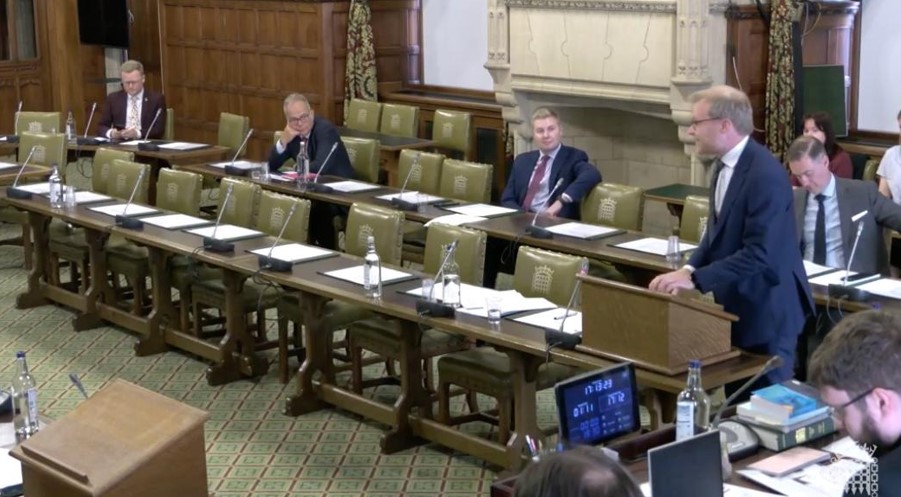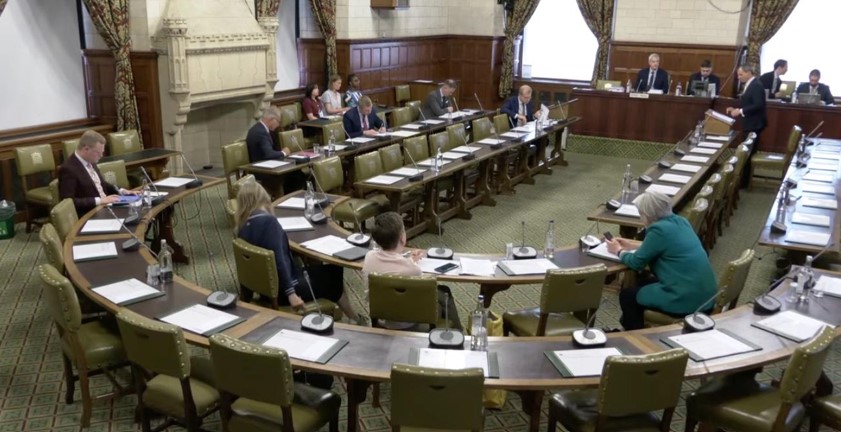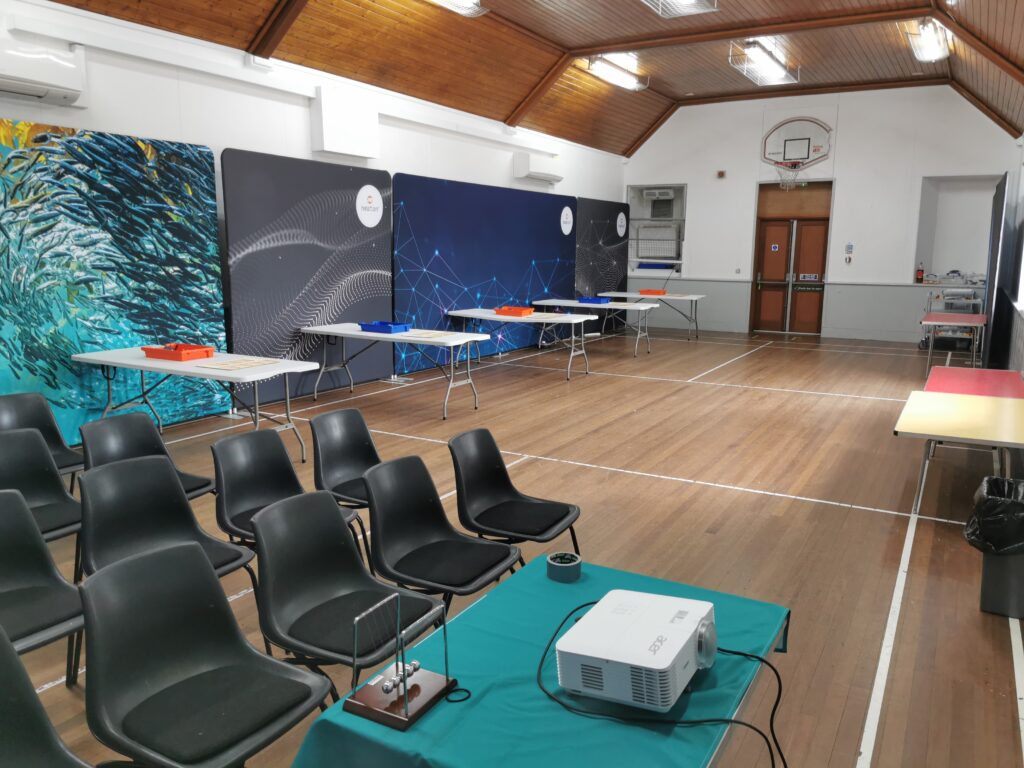This is a guest post by Anna Simonton, on assignment with Oil Change International | Part 2 of 2
Lauren Wood grew up in a family of river guides in the Uinta Basin region of Utah. She navigates tributaries of the Colorado River like her urban counterparts navigate subway systems. She learned to ride a horse, and then drive a car, on the Tavaputs Plateau. And she can name most any gorge or gully in the place she calls home.
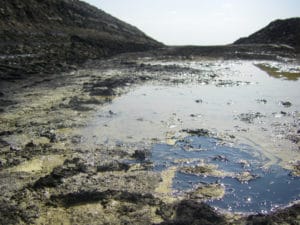
After clear-cutting trees and sagebrush, U.S. Oil Sands digs open-pit mines to test their tar sands extraction process. If the company starts producing tar sands on a commercial scale, 32,000 acres in Utah’s Uintah Basin could be covered with these pits, along with tailings ponds that would store huge amounts of waste water and chemicals used in the extraction process. (Courtesy of Before It Starts).
But this landscape so familiar to her has transformed over the past decade to one in which drill rigs are more common than cattle herds, and methane emissions have degraded the air quality in this wilderness region to rival that of Los Angeles.
New technologies like fracking––along with government subsidies––have ushered in an energy boom reliant on extreme extraction methods to produce oil and natural gas. Now the Uinta Basin is ground zero for what threatens to become the next phase in extreme energy extraction: strip mining for tar sands and oil shale.
Tar sands are a sticky mixture of sand, clay, water and bitumen that can be processed into fuel, but require more refining than conventional crude oil, releasing more greenhouse gases and toxins in the process. Despite the fact that Canadian tar sands mining is pushing the Earth toward disastrous climate change, some companies are moving forward with tar sands mining projects in the United States.
Oil shale, not to be confused with shale oil (which is oil released by fracking), is solid bitumen inside sedimentary rock. When heated at high enough temperatures, it’s possible to liquify the bitumen and release it from the rock. This requires a whole lot of fuel just to make more fuel, and also promises to drastically worsen the effects of climate change.
Part one of this article delved into the history of how, in the past, taxpayers have footed costly bills for government-sponsored tar sands and oil shale development that never turned out to be commercially viable. The last of these projects fizzled out in the 1980s. Now, thanks in large part to a provision in the Energy Policy Act of 2005––written by Utah Republican Senator Orrin Hatch––oil shale and tar sands are back on the table.
Red Leaf Resources and U.S. Oil Sands are two companies that have led the renewed crusade to develop oil shale and tar sands in the United States. Red Leaf leases Utah state land for its oil shale mine site near the Tavaputs Plateau in Uintah County. A few miles away, straddling the boundaries of the Uintah-Ouray Reservation, sits the tar sands mine site of Canadian-based U.S. Oil Sands.
In 2008, one of Red Leaf’s Vice Presidents, Laura Nelson, teamed up with a U.S. Oil Sands Executive to co-write a white paper for the Utah Mining Association (UMA), a lobbying group. In it, they spelled out the ways that state and federal governments should subsidize tar sands and oil shale development. Since then, several of their recommendations––including millions of dollars in tax breaks, leasing public land at rock-bottom prices, and government-funded infrastructure projects––have become reality.
A twenty-year tax holiday for tar sands and oil shale
The same year the Utah Mining Association (UMA) white paper came out, a new PAC called The Quality Jobs Coalition registered in Utah.
Of the six listed PAC members, three are former UMA presidents. In 2008, The Quality Jobs Coalition spent over $50,000 in donations to 28 candidates for the Utah legislature, the majority of whom won.
In the following legislative session, one of those candidates introduced a bill that began as a measure to create tax credits for renewable energy projects, (even though it included and emphasized nuclear energy), but was renamed and expanded to incentivizealternative energy projects, including oil shale and tar sands.
The original bill’s tax credits were projected to be valued at $2.6 million in annual revenue for the first two years. With tar sands and oil shale included, that estimate ballooned to $5 million annually for the first few years, and an incredible $360 million annually down the road.
That’s equal to six percent of the 2015 budget for Utah’s General Fund and Education Fund––the two pools of money from which funds are diverted in order to cover the cost of the huge refunds these tax breaks offer.
Companies that take advantage of the Alternative Energy Development Incentive get to write off 75 percent of their state taxes annually for up to twenty years.
And manufacturers of oil shale and tar sands equipment get a completely free ride with the Alternative Energy Manufacturing Incentive, which offers a full 100 percent state tax refund for up to twenty years.
Royalties buy taxpayers a Road to Nowhere (except a tar sands mine)
Taxes or no taxes, there is still revenue to be made from royalties. More than seventy percent of Utah is public land, and when extractive industries mine or drill on it, they have to pay a certain percentage of their profits to the state and federal governments.
In Utah, that money goes into a Mineral Lease Fund, which gets distributed to various agencies for projects that offset the local impacts of fossil fuel extraction. For example: health services for kids whose asthma is triggered by the ridiculously high ozone levels in the Uinta Basin.
But fossil fuel companies often try to twist the scenario to benefit themselves.
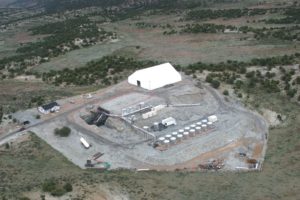
In 2010, Red Leaf Resource’s oil shale research and development site was nestled amongst vegetation in Utah’s Uintah Basin region. Now the surrounding acreage looks like a desert, as the company has clear cut a huge swath of the 1,600 acres it leases from the state in order to mine sedimentary rock with deposits of bitumen inside. (Courtesy of EcoFlight).
In 2007, Red Leaf founder Todd Dana attended a meeting of Uintah County Commissioners and Vernal City Council, where he said, “delivery is an important concern and it is critical to get the oil south to the railroad for transportation.”
Commissioner Mike McKee responded, “One of the greatest needs is the repair of Seep Ridge Road.”
At that time, Seep Ridge Road was mostly gravel. Starting southwest of Vernal, it wound about seventy miles south, through Ute tribal lands, across the Tavaputs Plateau to the Book Cliffs, an escarpment so steep it’s almost non-traversable by car.
Only hunters, backpackers, ranchers, and locals were generally using the road until Red Leaf and U.S. Oil Sands came on the scene and Seep Ridge Road became the main access point for their mine sites.
So when the county moved forward with a multi-million dollar revamp of the road, to be paid for with money from the Mineral Lease Fund, critics dubbed it The Road To Nowhere, and pointed out the obvious: public coffers were being drained for the sole benefit of the oil shale and tar sands companies.
This November, the last phase of construction was completed and a ribbon cutting held on what’s now a forty-foot-wide highway through the wilderness, made for semi-trucks and megaloads, paid for with $86.5 million in public funds.
Oil shale on stolen––and public––land
Red Leaf was also implicated in a 2012 scandal that brought corporate governance in the Uintah Basin to a new level.
Four years earlier, in 2008, the Bureau of Land Management had announced a plan to open up two million acres of public lands (including land that was part of the Uinta-Ouray Reservation until the Homestead Act divvied it up between white settlers and the government) for oil shale development in Utah, Wyoming, and Colorado. The plan also allotted 431,000 acres for tar sands development in Utah.
The original plan amounted to a huge subsidy to these industries because royalties were set at only five percent––less than half the standard rate for conventional oil and gas.
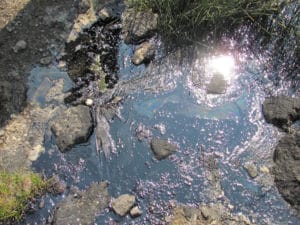
The remains of a bird are mired in an oily pool at the site of a tar sands test mine. (Courtesy of Before It Starts).
But public pressure led the BLM to re-assess the plan, and in 2012 they announced a new one that significantly curtailed the amount of land up for grabs.
That’s when Uintah County leaders held an illegal meeting at the Golden Age Senior Center in Vernal, Utah.
Among the the thirty-two people in attendance were county officials from Utah, Colorado, and Wyoming; a lobbyist from Red Leaf and another oil shale company; the director of a national oil shale lobby group; a board member of a nonprofit with ties to Red Leaf; an official from the Uintah-Ouray Reservation; and the George W. Bush-era BLM Director who oversaw the original land lease proposal and was an adviser to Utah Governor Gary Herbert at the time of the meeting.
Behind closed doors––in violation of the state’s sunshine laws––they crafted a plan for elected officials from each county to pass resolutions opposing the BLM plan. In follow-up emails they shared draft resolutions that could serve as models for the industry to push in the relevant counties. In little more than a month, the resolutions were passed and officials from six counties held a joint press conference lauding their actions.
When an open records request brought the meeting to light, public outcry caused some County Commissioners to rescind the resolutions. But their actions had the intended effect; the BLM conducted yet another assessment and expanded their plan to offer a total of 830,000 acres of public land for oil shale and tar sands development. This time, the agency didn’t set a royalty rate at all.
Tar sands and oil shale election money
A key player in all of this is Uintah County Commissioner Mike McKee. In 2006, the year before the Seep Ridge Road project took off, he reported zero contributions to his election campaign. In 2014––eight years into the region’s oil and gas boom––he reported $20,096, possibly a record for Uintah County, where local campaigns rarely garner more than $10,000.
$5,000 of McKee’s campaign money came from Uintah Resources, which Todd Dana founded in 2009 after selling his share of Red Leaf. Another $5,000 came from an oilfield equipment company, and several thousands more from various companies and individuals in the fossil fuel industry.
Laura Nelson, the Red Leaf VP who co-wrote the Utah Mining Association white paper, has circled through a revolving door from the Utah state house to Red Leaf, and back to the state house––this time as Director of Utah’s Office of Energy Development.
It’s worth mentioning that Nelson contributed $5,000 to Governor Herbert’s campaign in 2012 (when she was still an employee of Red Leaf), and that other Red Leaf executives, their main lobbyist, and the company itself, have donated a combined $26,000 to Herbert’s campaigns and his PAC.
So it’s no surprise that earlier this year, at the third annual Governor’s Energy Development Summit, Herbert announced that oil shale and tar sands were second on his list of five energy priorities for 2015.
That was on June third. On July 21––the same day Nelson was appointed Director of Energy Development––twenty-one people were arrested at the U.S. Oil Sands mine site.
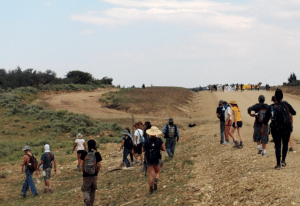
Land defenders block the road leading to a tar sands mine site. The protest prevented the company U.S. Oil Sands from clearing vegetation on land where it plans to dig open pit mines and tailings ponds for toxic waste.
The land defenders
They started arriving in May––dozens of people from all over Utah and all over the country––to camp together on the Tavaputs Plateau. From the encampment, they could hike two miles to the U.S. Oil Sands site to monitor developments and plan actions.
In the early morning hours of July 21, fifteen people entered a fenced-off cage where U.S. Oil Sands kept equipment used for clear-cutting. They chained themselves to machinery and the fence, as sixty more people surrounded the area with banners and blockaded the road.
By the middle of the afternoon, twenty-one people were in jail and two were hospitalized with injuries inflicted by police. But no land on the Tavaputs Plateau was leveled that day.
“It’s a pretty emotional thing to be up there and see people actually stopping it from happening,” says Lauren Wood, the river guide and a co-founder of Peaceful Uprising. Peaceful Uprising is one of the groups that organized the action camp, along with Tar Sands Resistance and Canyon Country Rising Tide.
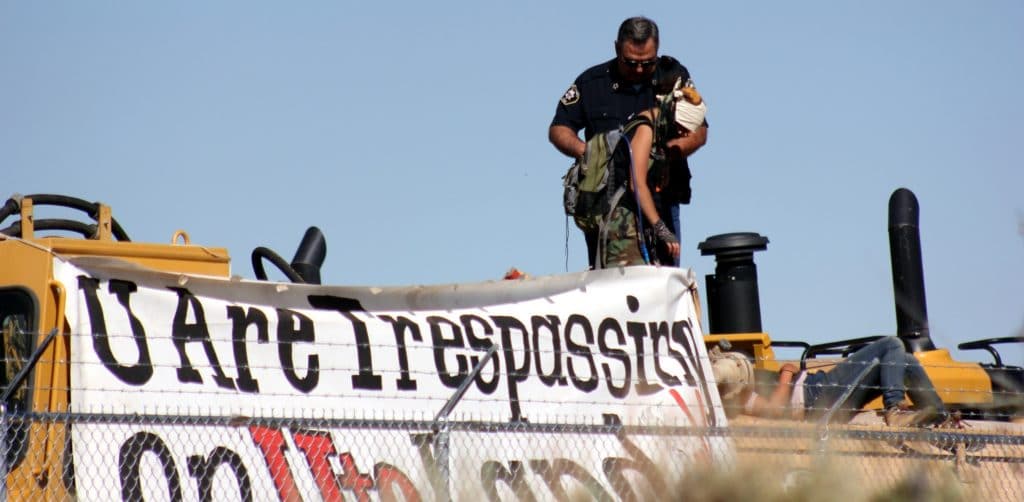
Parts of U.S. Oil Sands mine site extend onto Ute tribal lands. The Environmental Protection Agency warned the company in June that it didn’t have permission to operate on Ute land. On July 21, 2014, fifteen people chained themselves to a fence and to machinery on the tar sands mine site operated by U.S. Oil Sands.
Aside from the immediate impact and thrill of a day-long work stoppage, the groups are confident that the cumulative effect of their persistence will be to stop the mines.
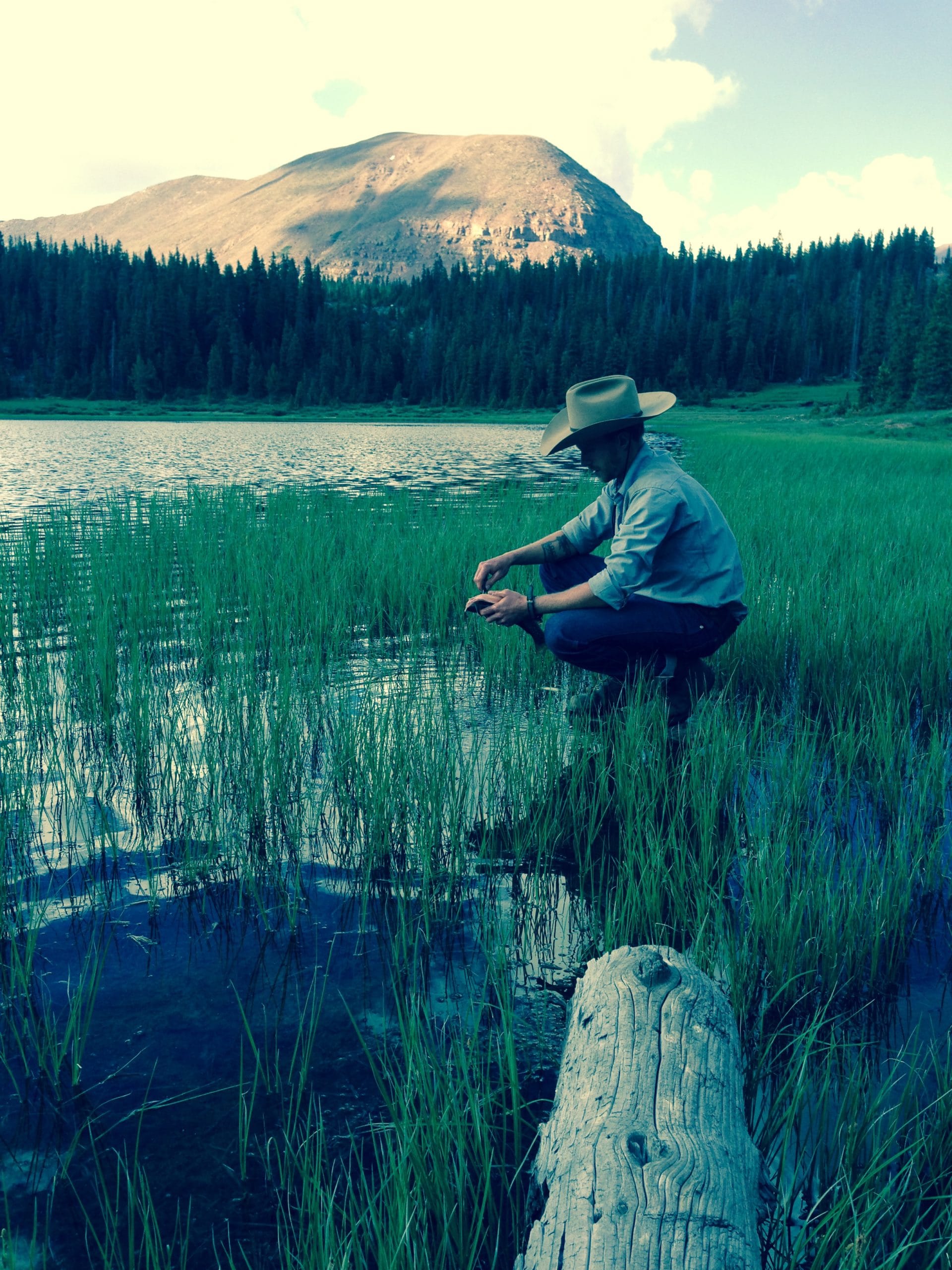
Will Munger works as a cowboy in the Uintah Basin, where tar sands and oil shale development are threatening water sources critical to ranching and agriculture. (Courtesy of Will Munger)
Red Leaf, U.S. Oil Sands and the other companies pioneering tar sands and oil shale development are small and financially precarious, even with the millions of taxpayer dollars wasted on their projects.
The land defenders say that with enough pushback, investors may get nervous. Stock prices can tank. There really is a window of time for preventing a U.S. tar sands and oil shale industry.
Another land defender, Will Munger, works as a cowboy on the Tavaputs Plateau and camped out at the protest site.
Munger takes a long view of the past and the future when he talks about the relationships between climate change, government, and corporations.
“The West has been defined by these boom and bust cycles since colonization,” he says.
“What we need out here in the desert is a way of relating to the land and relating to each other where there is a stable, functional economy that preserves the ecosystems that keep us alive. Not schemes that are part of this economic model that looks at short-term profit over long-term sustainability.”
There were a few more actions and arrests in the months after July. By the end of October, the last of the campers had packed up as development at the mines slowed down and winter set in.
But they’ll be back come spring, and anyone is welcome to join them.
—
You can read Part 1 of the Subsidy Spotlight here.
—
TAKE ACTION: You can help put an end to fossil fuel subsidies and extreme energy extraction by clicking here.
This story was written by Anna Simonton, on assignment with Oil Change International. It’s the fifth in a series of “Subsidy Spotlights”, highlighting the real-word impacts of fossil fuel subsidies. You can read our first subsidy spotlight here, our second here, our third here, and our fourth here.
Subscribe to our newsletter
Stay up to date with DeSmog news and alerts




